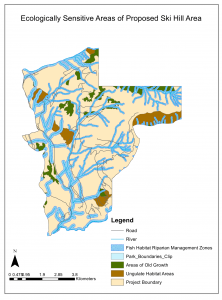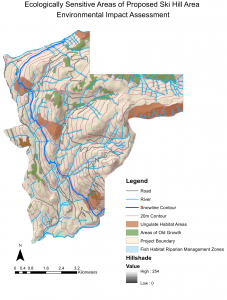In Unit 3, the main assignment was to draft our Formal Research Reports. I found this a challenging process, as it involved many external components that needed to come together in time for a fixed due date. For example, several of my planned interviews were rescheduled at the last minute to later weeks, and I was left without data to report in my draft. Likewise, interviews that did take place often led me into new and interesting directions of research, which I felt I unfortunately couldn’t pursue as I had already committed to a certain topic, scope, and research direction in my report proposal. However, writing the report made me realize I had a lot more information and insight than I had previously thought, and I was able to put together a complete and detailed report draft. As I have found throughout this term, the peer review process is the most valuable aspect of crafting assignments, as we so rarely receive feedback in classes where there is an opportunity to make the suggested revisions before finally submitting.
Research
The research process for my formal report included reviewing reports and digging deep into website archives to find relevant information about UBC’s Climate Action Plan, Greenhouse Gas Emissions targets, and sustainable food initiatives. I also used the Interview questions I had created previously to conduct my interviews. I found, not surprisingly, that it was often difficult to follow the exact sequence of questions I had planned to, as the interviewees often said something that required an unplanned follow-up question. However, I used what I’ve learned in other classes about interview techniques: ask open-ended questions, come with twenty questions being prepared to ask only ten of them, and make sure the questions are fair and standard across all interview subjects. Following these best practices, I was able to complete a comprehensive and smooth research process.
Organization
Organizing my report was challenging, as I often felt the need to explain various acronyms, groups, and projects so that the report would be accessible to anyone who reads it, including my peer reviewer and soon the course instructor. However, part of our task is also to direct this report to a specific audience, which in my case is someone working within the relevant institution who would likely find all this explanation completely unnecessary. To resolve this issue, I focused on being concise, not using too many acronyms and report titles, and using straightforward language that used the ‘YOU’ writing principles. Being strict with myself about length restrictions was a rewarding challenge, as I believe the final product is stronger, and still accessible for a general audience, without over-explaining things for the technical reader.
Writing
Writing the report was a fairly straightforward process after I had made a very detailed outline and gathered all the necessary information from research and interviews. One challenge I faced was to maintain an engaging active voice while not using pronouns according to the Writing with ‘YOU’ principles. I felt that some of my sentences were written in passive voice, which isn’t as interesting for the reader, so I am still working on employing the active voice more. Another issue I faced with removing ‘I’ and ‘we’ pronouns was due to my education in Geography, which emphasizes the importance of situating oneself in one’s research – no matter how technical or formal – to make it clear that knowledge and insights written in the paper ultimately come from a subjective source with a particular point of view – me. This is important to me, as so much of what is considered credible and important literature in the world has come from a Western, colonial perspective, but has been presented as universal knowledge. This applies especially to technical and science writing that has critical human implications. Navigating this while writing with a ‘YOU’ attitude that recommends removing pronouns has been challenging, but I am trying to honour both teachings by avoiding ‘objective’ declarative statements by investigating more closely whether they are indisputable facts or subjective recommendations.
Peer Review Process
My peer reviewer, Erin, provided valuable feedback that I will incorporate into my final report. I found feedback on cutting large blocks of text and suggestions on grammar and flow particularly helpful, as it is often easy to miss or repeat mistakes when reading your own work repeatedly. I also enjoyed the process of peer reviewing Erin’s report as it was a completely different topic from my own, and a different method of data collection as well. I provided helpful suggestions on formatting (such as how to present headings and subheadings in the Table of Contents to be more intuitive), as well as style and flow edits. I also tried to help by checking if the writing in the report matched the intended technical audience by being concise as possible (as we were told to assume our reader was very busy), and that the information was organized in a logical and clear way visually.
Attached: Formal Report Draft


